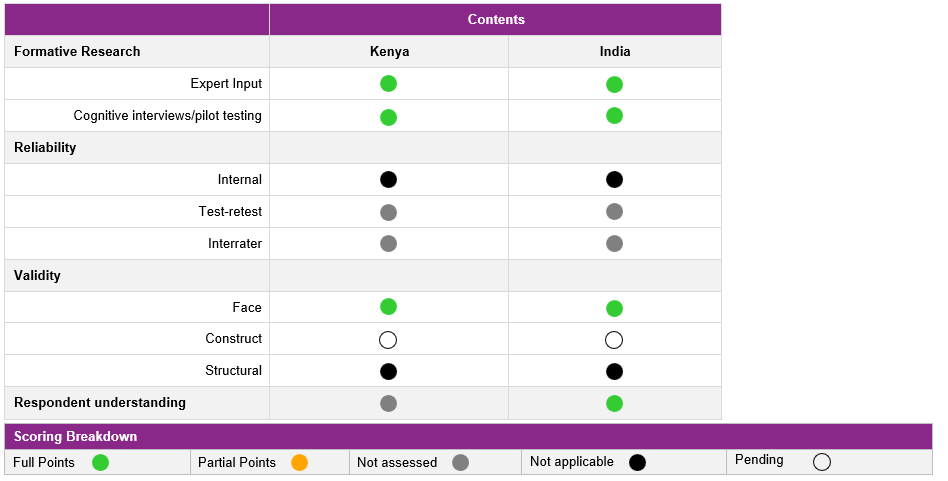Evidence suggests the process of decision-making itself—in addition to the final outcome—has important implications for households. This tool aims to deepen our understanding of how decisions are made when spouses have different preferences or constraints. When household members agree on the decision (regardless of the motivations), the decision-making process is relatively simple to understand. But when differences in opinions arise, the intrahousehold decision-making process can be more complex. This tool uses vignettes aimed at capturing five potential conflict strategies in which individuals may engage (avoidance, dominance, compromise, obliging, and collaboration). The vignettes build on Rahim’s (1983) Model of Conflict Management styles for interpersonal conflicts, which is widely used to assess conflict behavior of individuals across five styles: (1) Avoidance, (2) Dominance, (3) Compromise, (4) Obliging, and (5) Collaboration. This information could be used to develop appropriate interventions that recognize the various types of conflict strategies people in a given area use within household decision-making. It may also be used to characterize household types for further analysis.
Link to: tool content and guidelines, CTO file, and statistical annex
Duration: This tool takes on average 6.55 minutes to be implemented
Permitted use of the tool: all users are free to use the tool with citation: “MAGNET (2023). Intra-personal Conflict Strategies. https://magnet.ifpri.info/intra-personal-conflict-strategies/”
Tool sample
Scenario 1: [Woman A/Man A] has concerns about the water source their household uses for drinking water. They think it is important to change the water source, but other household members disagree. They do not say anything to other household members because they do not want to have a conflict.
Scenario 2: [Woman B/Man B] has concerns about the water source their household uses for drinking water. They think it is important to change the water source, but other household members disagree. They aim to persuade others their idea is best and take control of the situation.
Scenario 3: [Woman C/Man C] has concerns about the water source their household uses for drinking water. They think it is important to change the water source, but other household members disagree. They intend to yield their position some and expect others to do the same.
After each scenario, ask:
- Do you resemble this person?
- Yes
- No (skip to 3)
- Are you completely the same or somewhat similar to this person? (then skip to next scenario)
- Completely the same
- Somewhat the same
- Are you completely different or somewhat different from the person?
- Completely different
- Somewhat different
Measurement properties
- Geographies Tested: Kenya, India
- Populations included: Women, Men
- Age range: Adults
For details on these testing metrics, visit our scoring methodology page.

 International Food Policy Research Institute
International Food Policy Research Institute